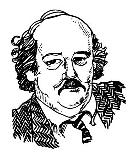(Syndicated to Kansas newspapers Oct. 10, 2016)
 There are inside-the-Statehouse maneuvers that most Kansans don’t have a lot of reason to take interest in—but which shake the ground inside the building where everyone is looking for a political or tactical advantage.
There are inside-the-Statehouse maneuvers that most Kansans don’t have a lot of reason to take interest in—but which shake the ground inside the building where everyone is looking for a political or tactical advantage.
It appears that Gov. Sam Brownback’s not-very-catchily named “Governor’s Consensus Revenue Estimating Working Group” is one of those maneuvers.
The goal: To have that six-member Consensus Revenue Estimating Group, which includes two members of the governor’s staff, a member of the Legislature’s Research Department and three university-named economists, come up with the most accurate estimates possible of the revenue coming into the state treasury.
The closer the estimate, the more accurately the governor and Legislature can assemble a budget and make tax policy for the state. You gotta know where you are financially to make decisions on where you’re going. That’s pretty simple.
It’s why you shop for a Chevy, not a Cadillac.
So, the working group came up with some suggestions—more data, more input from industry folks, bankers and others—to improve the state revenue estimating process. Those estimates in recent years have generally been less than actual receipts, which means that budgets have to be cut and shuffled to make it through the fiscal year.
Now, those changes Brownback’s panel suggested probably aren’t all bad. The more information you have, the better estimate you get and the better taxing and spending decisions you make.
But…while that sounds good, legislators are starting to wonder why just now Brownback wants these changes made in a decades-old estimating procedure.
Many are thinking about timing. The new and likely more accurate estimates aren’t likely to be made before the key date of Nov. 10. That’s when the Consensus Revenue Estimating Group is scheduled to produce its estimate of revenues for the remainder of this fiscal year, next fiscal year and the one after. Those are the figures that the governor uses to craft his budget to present to the Legislature in January when the 2017 session opens.
Probably a good time to mention that this January will be Brownback’s last budget submission to the Legislature, now that he’s put the state on a two-year, or biennial, budget system, which means this will be the budget for the last two years of the second and last term of his governorship.
Don’t count on that altered, and presumably more accurate, budget estimating process to get into full gear until May 1. Once the fully-ramped up and presumably more accurate budget estimate process is in full gear, it’s likely to present that likely lower budget estimate to the Legislature on May 1.
And…that’s where things get interesting.
Legislators are near-certain that as usual, the actual revenues flowing into the state won’t support the governor’s budget, so they will be the ones who have to cut spending on the last few days of the session, taking out those politically popular/necessary spending items that Brownback will have offered in his well-publicized State of the State speech.
That means legislators are the ones carving away at services that their constituents want, they are the ones delaying that road project, that assistance for the poor and sick.
So while accurate revenue estimates are great…it’s when they actually hit the hard world of appropriations that is the political key here.
Yes, some legislators believe they’re being set up with this new interest in accurate revenue forecasts, that they’ll be the ones who pay the political price.
Oh, and don’t forget if the Legislature shears the governor’s budget and more accurate revenue projections still prove too low, then the governor can single-handedly make the cuts without legislative oversight. That hands him more control over what Kansas looks like than he could probably get lawmakers—who aren’t looking at their constitutional last term in office—to approve.
Yes, this will be interesting to watch…
